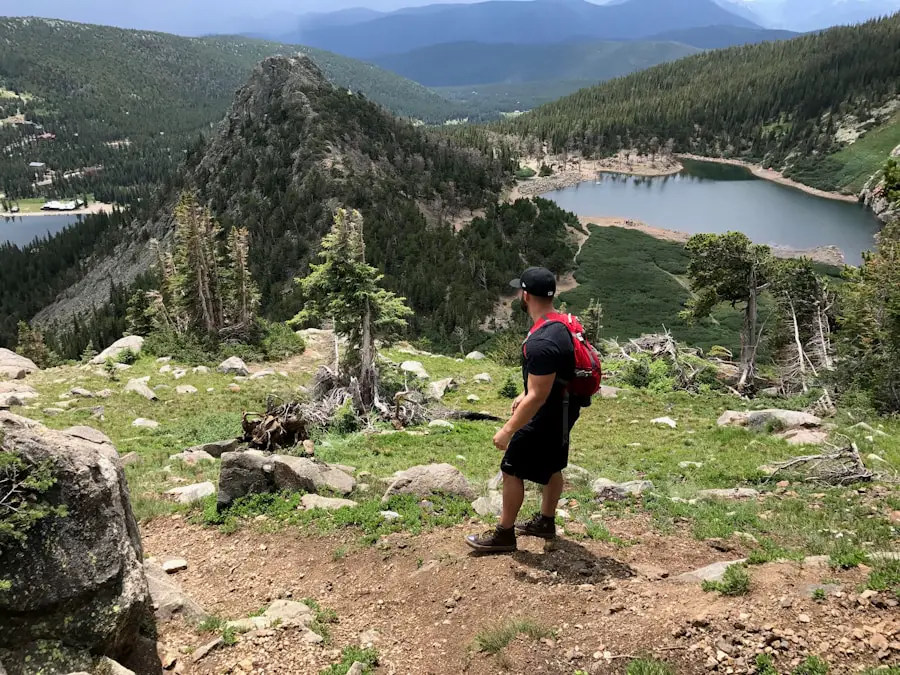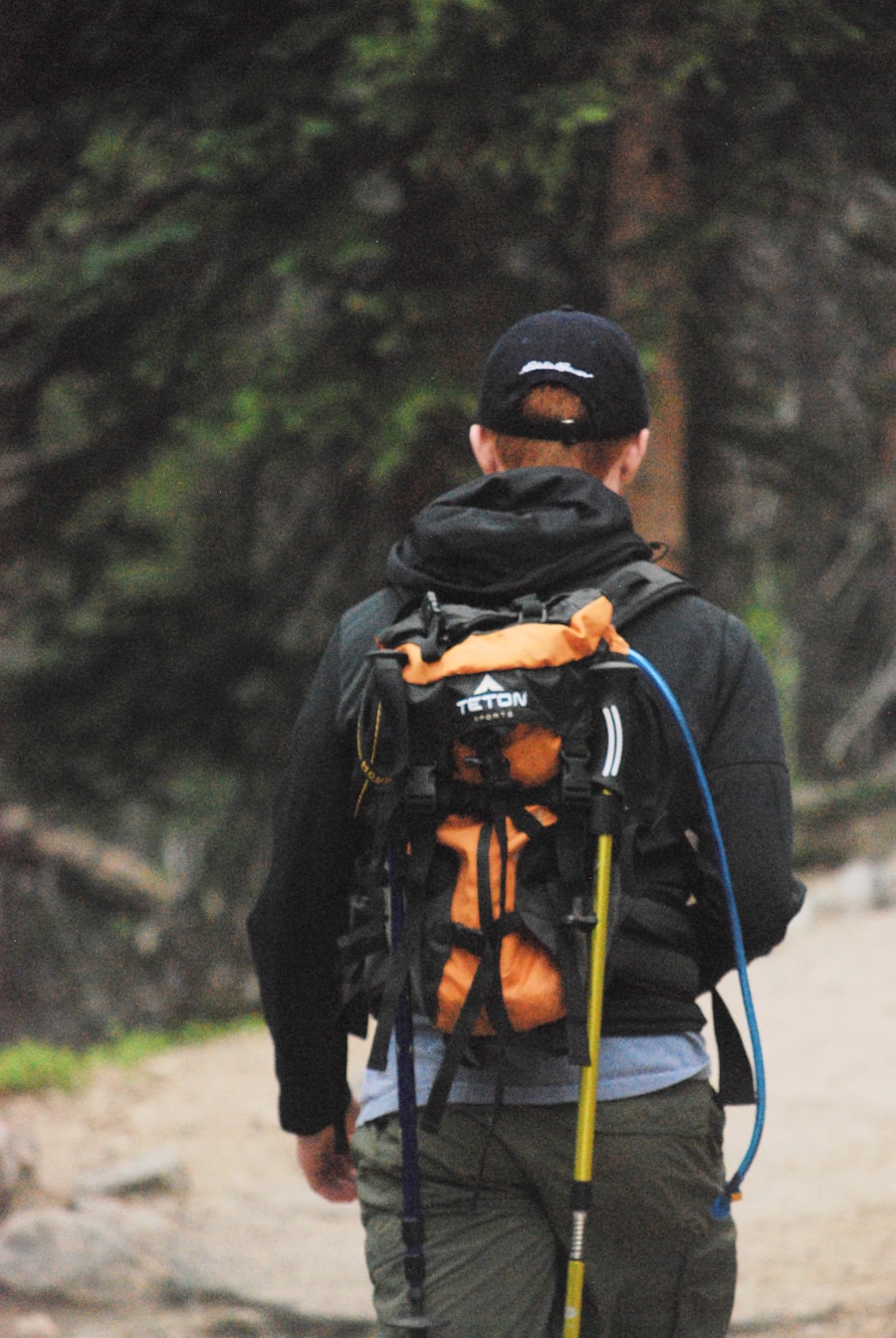Hiking pants are an essential component of any outdoor enthusiast’s wardrobe, designed specifically to enhance comfort and performance during treks through diverse landscapes. Unlike regular pants, hiking pants are crafted from specialized materials that offer durability, breathability, and flexibility, making them ideal for the rigors of outdoor activities. The right pair of hiking pants can significantly impact your overall experience on the trail, providing protection from the elements while allowing for a full range of motion.
As more people embrace the joys of hiking, understanding the nuances of hiking pants becomes increasingly important. The evolution of hiking pants has been influenced by advancements in fabric technology and a growing awareness of the specific needs of hikers. Modern hiking pants often incorporate features such as moisture-wicking properties, UV protection, and quick-drying capabilities.
These innovations cater to the demands of various hiking conditions, ensuring that adventurers remain comfortable and protected regardless of the environment. As we delve deeper into the world of hiking pants, it becomes clear that selecting the right pair is not merely a matter of style but a crucial decision that can enhance safety and enjoyment on the trail.
Key Takeaways
- Hiking pants are an essential piece of gear for outdoor enthusiasts, providing comfort, protection, and functionality during hikes and outdoor activities.
- Key features to look for in hiking pants include moisture-wicking and quick-drying materials, durable and abrasion-resistant fabric, adjustable waist and cuffs, and ample pocket space for storage.
- Some top brands and models of hiking pants include Patagonia, Arc’teryx, Columbia, The North Face, and REI Co-op, offering a range of options for different preferences and budgets.
- Hiking pants for different weather conditions should include options for lightweight and breathable pants for hot weather, and insulated and waterproof pants for cold and wet conditions.
- Hiking pants for different types of terrain should be chosen based on the level of abrasion resistance, flexibility, and protection needed for the specific terrain, such as rocky, muddy, or bushy trails.
- Hiking pants for men and women may have different fit and sizing options, as well as specific design features to accommodate different body shapes and preferences.
- Tips for choosing the right hiking pants include trying on different styles and brands, considering the specific needs of the hike or activity, and reading reviews and recommendations from other hikers.
- In conclusion, it’s important to invest in high-quality hiking pants that suit your individual needs and preferences, providing comfort, protection, and functionality for all your outdoor adventures.
Key Features to Look for in Hiking Pants
Fabric Composition and Durability
Many hiking pants are made from synthetic materials like nylon or polyester, which offer excellent durability and resistance to abrasions. These fabrics are often treated with water-repellent coatings to provide additional protection against light rain or splashes.
Breathability and Ventilation
Hiking can generate significant body heat, and having pants that allow moisture to escape is essential for maintaining comfort. Look for pants with mesh-lined pockets or ventilation zippers that can be opened to increase airflow.
Fit and Design for Freedom of Movement
A good pair of hiking pants should provide a balance between a snug fit and enough room for layering underneath if needed. Features such as articulated knees and gusseted crotches can enhance freedom of movement, making it easier to tackle challenging trails.
Top Brands and Models of Hiking Pants

The market for hiking pants is populated with numerous brands, each offering unique features and styles tailored to different types of hikers. One of the most recognized names in outdoor apparel is Patagonia, known for its commitment to sustainability and high-quality materials. The Patagonia Quandary Pants are a popular choice among hikers due to their lightweight design and versatility.
Made from a blend of nylon and spandex, these pants provide excellent stretch while also being quick-drying and water-repellent. Another brand that has garnered a loyal following is Columbia, which offers a range of hiking pants suitable for various conditions. The Columbia Silver Ridge Convertible Pants are particularly noteworthy; they feature zip-off legs that transform them into shorts, making them ideal for changing weather conditions or varying levels of exertion.
Additionally, the Omni-Shade technology provides UPF 50 sun protection, making these pants suitable for sunny hikes. For those seeking high-performance options, Arc’teryx is a brand synonymous with technical excellence. The Arc’teryx Gamma LT Pants are designed for alpine environments, featuring a durable yet lightweight fabric that withstands harsh conditions while allowing for maximum mobility.
These pants are equipped with a water-repellent finish and articulated knees, making them perfect for serious hikers who demand performance.
Hiking Pants for Different Weather Conditions
| Weather Condition | Recommended Hiking Pants | Features |
|---|---|---|
| Sunny and Hot | Lightweight, quick-drying pants | UPF protection, breathable fabric |
| Rainy and Wet | Waterproof or water-resistant pants | Taped seams, DWR coating |
| Cold and Windy | Insulated, windproof pants | Fleece lining, adjustable waistband |
| Variable Conditions | Convertible hiking pants | Zip-off legs, multiple pockets |
Weather plays a significant role in determining the type of hiking pants one should wear. For warm weather hikes, lightweight and breathable fabrics are essential to keep cool and comfortable. Pants made from moisture-wicking materials help manage sweat while providing sun protection.
Many hikers opt for convertible pants that can be transformed into shorts when temperatures rise, offering versatility without sacrificing comfort. In contrast, colder weather requires a different approach. Insulated hiking pants or those designed with thermal layers can provide much-needed warmth during chilly treks.
Look for options that feature windproof materials to shield against biting winds while still allowing breathability. Some models come with fleece linings or additional insulation that can be beneficial during winter hikes or in high-altitude environments where temperatures can plummet unexpectedly. Rainy conditions necessitate waterproof or water-resistant hiking pants.
Many brands offer options with Gore-Tex or similar membranes that provide excellent protection against rain while remaining breathable. These pants often feature sealed seams to prevent water from seeping in at vulnerable points. Additionally, consider pants with adjustable cuffs or ankle zippers that can be tightened around boots to keep moisture out.
Hiking Pants for Different Types of Terrain
The terrain you plan to hike on significantly influences your choice of hiking pants. For rocky or rugged trails, durability is paramount. Pants made from reinforced fabrics can withstand abrasions from sharp rocks and branches, ensuring longevity even in challenging conditions.
Features such as reinforced knees and seat areas can provide extra protection where wear is most likely to occur. For hikers tackling muddy or wet trails, consider pants with water-resistant properties and quick-drying capabilities. These features help prevent discomfort caused by wet fabric clinging to the skin and reduce the risk of chafing during long hikes.
Additionally, some models come with built-in gaiters or adjustable cuffs that help keep mud and debris out of your boots. In contrast, if you’re planning to hike in areas with dense vegetation or thorny underbrush, look for pants with a tighter weave that can resist snags and tears. Some brands offer specialized fabrics designed to be both lightweight and tough enough to handle such environments without compromising comfort.
While many features of hiking pants are universal, there are distinct differences between men’s and women’s models that cater to anatomical variations and preferences in fit. Men’s hiking pants typically have a straighter cut and may feature longer inseams to accommodate taller frames. Conversely, women’s hiking pants often have a more tailored fit around the hips and thighs, providing comfort without sacrificing mobility.
Additionally, women’s models may include design elements such as higher waistbands or adjustable features that cater specifically to female body shapes. Some brands also offer options with built-in stretch panels or elastic waistbands for added comfort during movement. It’s essential for both men and women to try on different styles to find the best fit for their body type and personal preferences.
Moreover, color choices and patterns may differ between genders, with women’s hiking pants often featuring brighter colors or floral patterns while men’s options tend to lean towards earth tones or darker shades. However, many brands are increasingly offering unisex designs that focus on functionality over gender-specific aesthetics.
Tips for Choosing the Right Hiking Pants

Selecting the right hiking pants involves more than just picking a stylish pair; it requires careful consideration of various factors tailored to your specific needs. First and foremost, assess the type of hikes you plan to undertake—this will guide your choice in terms of fabric, fit, and features. If you frequently hike in diverse weather conditions, investing in convertible pants may provide the versatility you need without cluttering your gear closet.
Fit is another crucial aspect; ensure that the pants allow for freedom of movement without being overly baggy or restrictive. When trying on hiking pants, perform movements such as squatting or lunging to gauge how they respond during physical activity. Pay attention to inseam length as well; too long can lead to tripping hazards while too short may expose your legs to scratches or sunburn.
Consider additional features that may enhance your hiking experience. Pockets are essential for storing small items like snacks or maps; look for options with secure closures such as zippers or Velcro flaps. Ventilation features like mesh panels or zippered vents can also be beneficial during strenuous hikes when temperature regulation becomes critical.
Conclusion and Final Recommendations
In summary, choosing the right hiking pants is an integral part of preparing for any outdoor adventure. With various brands offering specialized models designed for different weather conditions and terrains, it’s essential to consider your specific needs before making a purchase. Whether you prioritize durability for rugged trails or breathability for warm weather hikes, understanding the key features will help you make an informed decision.
Ultimately, investing in high-quality hiking pants tailored to your unique requirements will enhance your comfort and performance on the trail. As you embark on your next adventure, remember that the right gear can make all the difference in enjoying nature’s beauty while staying protected and comfortable throughout your journey.
When deciding what pants to wear hiking, it’s important to consider the terrain and weather conditions you’ll be facing. For those looking for a versatile option that can handle various conditions, convertible hiking pants are a great choice. These pants can easily transition from long pants to shorts, providing flexibility as temperatures change throughout the day. For more tips on what to wear while hiking, check out this article on
